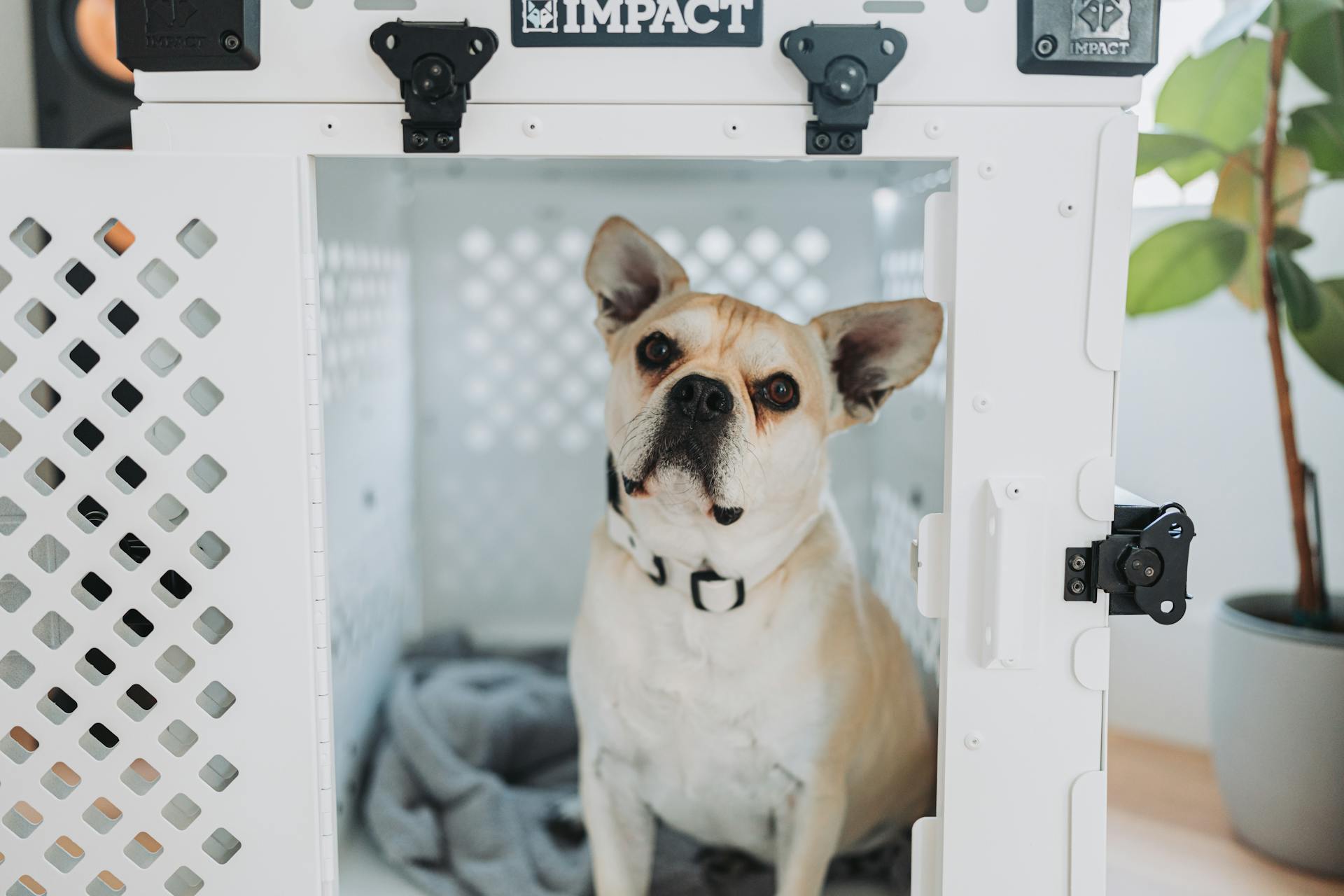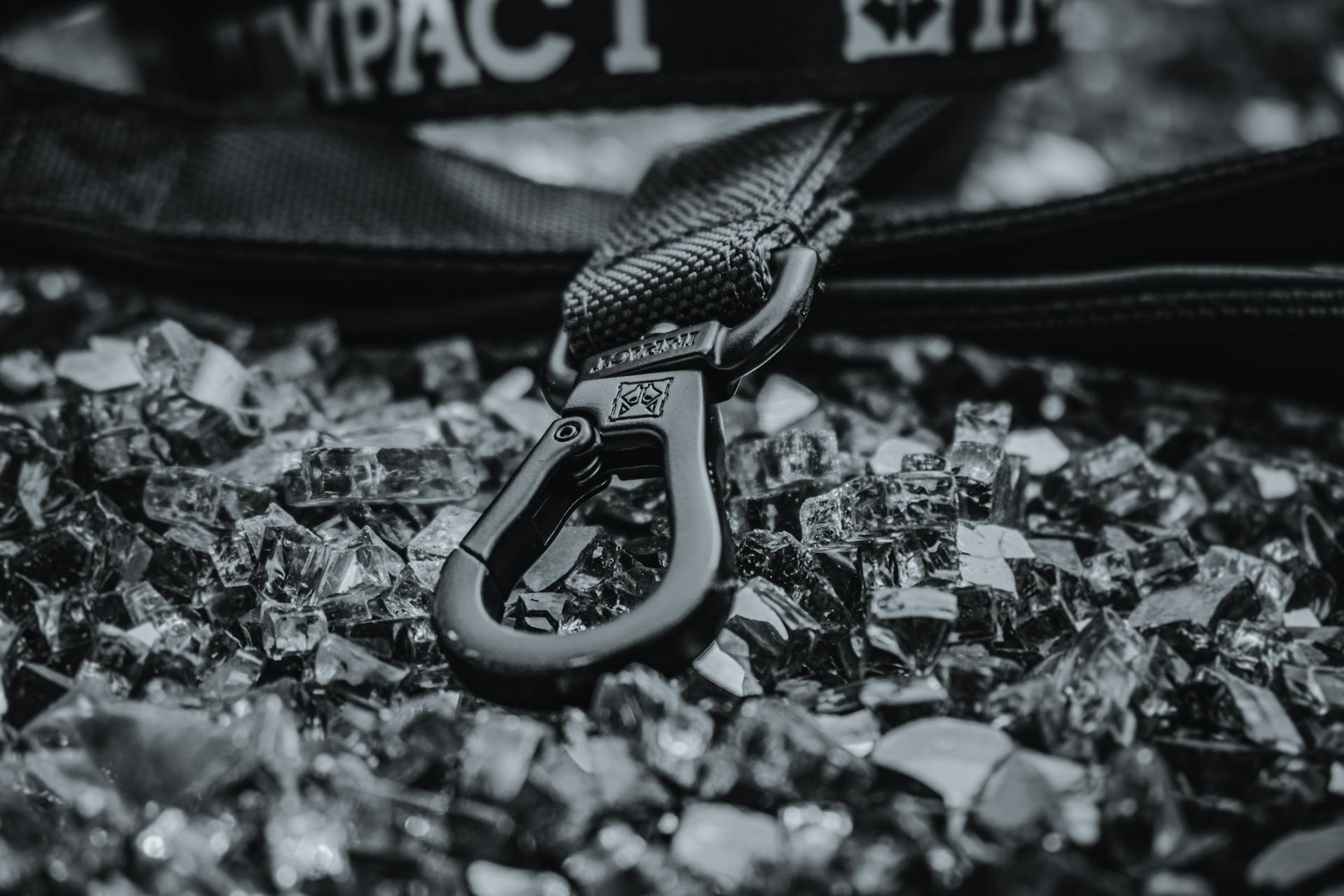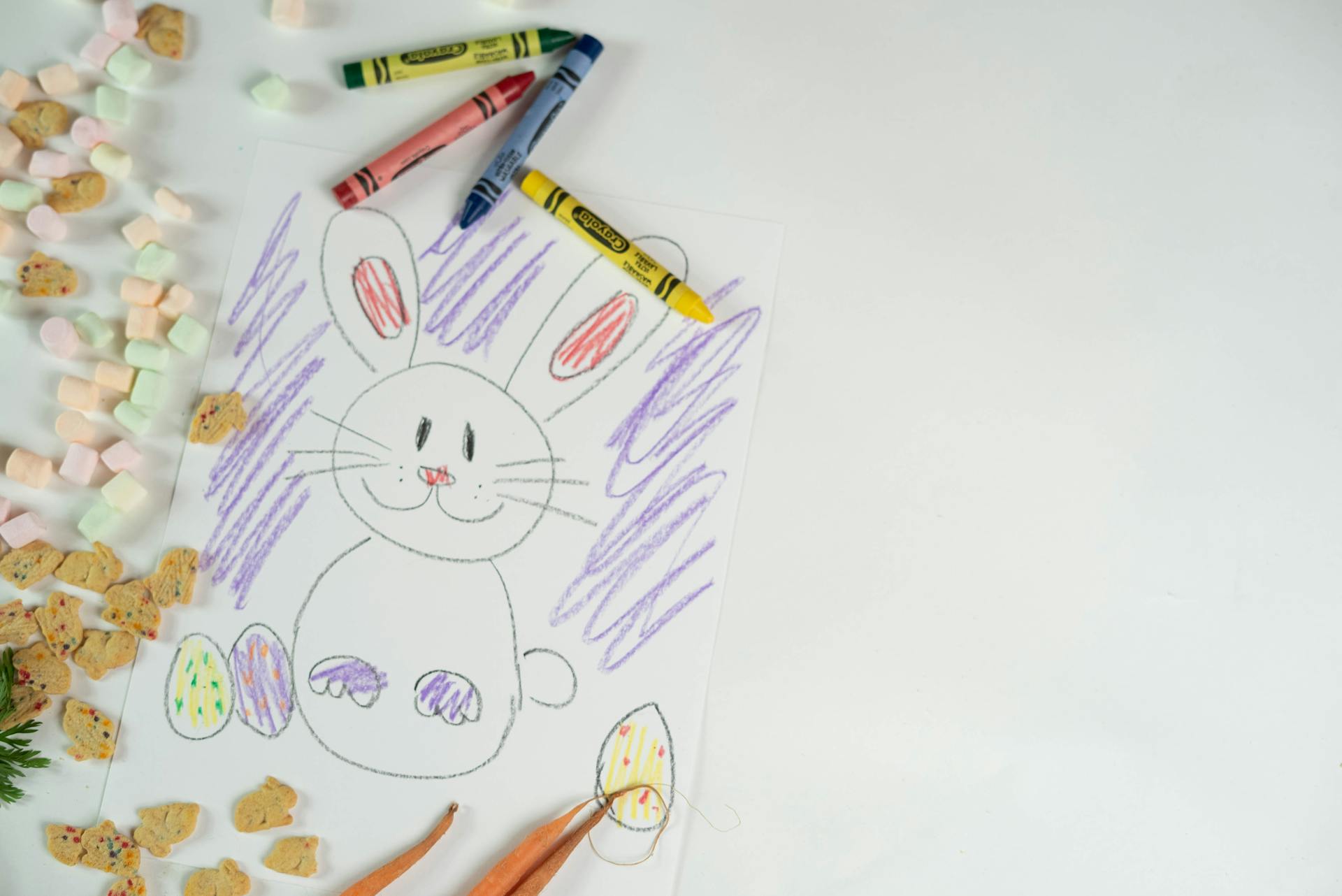
Crate training is a game-changer for new dog owners. It helps with potty training, reduces separation anxiety, and prevents destructive behavior.
To start crate training, you'll want to introduce the crate gradually, making it a comfortable and inviting space for your dog. This can be as simple as placing treats and toys inside to make it appealing.
Crate size is crucial, as a crate that's too small can be uncomfortable and even lead to health problems. Zak George recommends choosing a crate that's at least 6 inches longer than your dog's length.
By following these simple steps, you can help your dog feel safe and secure in their crate, setting the stage for a well-behaved dog.
Understanding Zak George's Method
Zak George's method is centered around positive reinforcement, which means he focuses on rewarding good behavior rather than punishing bad behavior. This approach helps build trust and a strong bond between dog and owner.
By using treats, praise, and affection as rewards, Zak George encourages dogs to learn and repeat desired behaviors. This technique can be especially helpful for puppies, who are naturally curious and eager to please.
One key aspect of Zak George's method is the use of short training sessions, which can be as short as 5-10 minutes. This helps keep puppies engaged and focused, reducing the risk of boredom and frustration.
Zak George emphasizes the importance of being consistent and patient when crate training. He recommends setting a regular schedule for training sessions and avoiding punishment or scolding, even if the dog makes a mistake.
Expand your knowledge: Zac George Dog Training
Crate Placement and Training
Crate placement is a crucial aspect of crate training. Ideally, you should purchase an appropriately sized crate, depending on how big your dog is going to get.
To make the crate area enticing, you can hand your furry friends tasty treats and toys while they are inside the space. This will help them associate the crate with positive experiences.
For young dogs, it's essential to start with short periods of crate time, such as 15 minutes to an hour, and gradually increase the duration over a few months.
Dog Environment Control
Dogs instinctively like their "home" to be clean, so establishing a crate can aid in training your dog to relieve himself outside.
Your dog probably considers the place he finds most comfortable to be his "home." Having a comfortable crate or area where your dog feels at "home" can certainly aid when potty training your puppy.
Consistency is key when training your dog, and making the crate a positive place to be is crucial. This can be achieved by making it comfortable with a bed or blankets, and covering it to make it feel safe.
Dogs are den animals and are drawn to small, enclosed places, so they often feel safe and secure in a crate.
On a similar theme: Why Are Dachshunds so Clingy
RV Crate Placement and Training
Crates are a great tool for house training and keeping your puppy confined so he doesn’t chew up things in your RV.
You'll need to figure out what type of crate you'll use and where in your RV it will fit the best before bringing home your puppy.
Crates are perfect for house training because they help with potty training and prevent destructive behavior.
To determine the best crate for your RV, consider the size of your puppy and the space available in your RV.
You'll want to place the crate in a high-traffic area of your RV, but not so close to the bathroom that your puppy gets distracted.
By placing the crate in a convenient location, you can easily supervise your puppy and take them outside to do their business.
Using a crate in your RV can help with house training by giving your puppy a designated area to go to the bathroom and sleep.
Discover more: House Training an Ex Breeding Dog
Crate Essentials
Crate training can be a fantastic way to help with overall training, giving your dog a secure place to rest, saving your property, and assisting with house training.
You should purchase an appropriately sized crate for your dog, depending on how big they will get as an adult, and get a divider to build the space and grant them more room over time.
Pup parents can make the crate area more enticing by handing their furry friends tasty treats and toys while they are inside the space.
Only leave your dog alone inside the crate for about an hour at first, and then you can start increasing the length of time you are away from them over a few months.
Minimize the amount of time your dog spends in the crate, aiming for 15 minutes to an hour here and there, and overnight is generally recommended.
For dogs under four months of age, it's best to avoid leaving them in a crate for more than four hours at a time.
Start by making the crate comfortable with a bed or blankets, and cover it to make it feel safe like a "den" with enough open space for ventilation.
Leave the door open and let your puppy walk in and out of the crate on their own, giving them a treat when any of their paws are inside.
As your puppy gets more comfortable in the crate, increase the time they stay in the crate in small increments, always with a safe and/or stuffed chew toy.
Readers also liked: Inside Dog Training
House Training with a Crate
House training with a crate can be a game-changer for puppy parents. According to Zak George, crates can give your dog a secure place to rest and assist with accelerating house training time.
To make crate training work, start by making the crate a positive place to be. Give your pup a treat when any of his paws are inside, and let him spend a few seconds inside with the door closed. This will help him feel comfortable going in and out of the crate.
If your puppy is having trouble going potty when asked, try putting him in the crate for a short time to give him a chance to go, and then take him back out to potty. If he doesn't go, put him back in the crate and try again until he succeeds.
Readers also liked: House Training Adult Dog
Home
Crating your dog is a simple way to keep them safe when you're not home. Crates prevent dogs from getting into trouble by keeping them out of the counter, trash, cleaning chemicals, and other hazardous areas.
Dogs can get into all sorts of mischief when left unattended, but crating keeps them contained. This means you can leave your home without worrying about your dog getting into the trash or pantry.
Crating also helps protect your belongings from damage. Your iPhone, remotes, and shoes will remain in the same place and condition when you return home.
Crating can be especially important for young dogs, as they may not understand what is safe and what is not. In one family's experience, giving their 3-year-old Labrador retriever house freedom almost killed her after she got into raisins and had to spend 7 days in the emergency veterinary hospital.
Readers also liked: Canine Dimensions Home Dog Training
House Training with a Crate
House training with a crate is a game-changer. You can use the crate to help your puppy learn to go potty outside by giving them a safe and cozy space to hold it until you take them out.
The crate should be just large enough for your puppy to stand up, lie down, and turn around in, but not so large that they can find a spot to go to the bathroom away from their bed. This will help with potty training and prevent accidents.
Pup parents can make the crate a positive place for their puppy by adding a bed or blankets and covering it to make it feel safe. You can also give your puppy treats when they go into the crate to make it a fun experience.
As your puppy gets more comfortable in the crate, you can start to use it to help with house training. If they won't go potty when asked, you can put them in the crate for 10-15 minutes and then take them back out to try again. When they do go potty, give them lots of praise and treats.
Remember, consistency is key when it comes to crate training and house training. You should only leave your puppy in the crate for short periods of time, such as 15 minutes to an hour, and gradually increase the time as they get older.
For another approach, see: Dog Training without Treats
Frequently Asked Questions
Is it okay to let a puppy cry in a crate at night?
No, it's not recommended to let a puppy cry in a crate at night, as they need reassurance and comfort in a new environment. Instead, address their needs to help them learn to sleep through the night.
What is the best crate training technique?
Gradually increase crate time and out-of-sight time by repeating a calm, in-and-out routine several times a day
Sources
- https://smartdoguniversity.com/dog-training-ask-the-trainer-when-can-i-get-rid-of-the-crate/
- https://thegentlepit.com/blogs/the-gentle-pit/crate-training
- https://www.mumsnet.com/talk/the_doghouse/4581152-zak-george
- https://blog.petflow.com/potty-training-your-puppy-with-zak-george/
- https://tiresandtails.com/dogs/raising-puppy-rv-crate-training-housetraining/
Featured Images: pexels.com


